LG UT8100 is a model that does not try to pretend to be more than it is. Simple, functional, and well-suited for everyday use. Its biggest advantage is the WebOS system – intuitive, fast, and rich in applications. With such a backend, using Netflix or YouTube is hassle-free, and navigating the menu takes just a moment. The Magic remote adds even more convenience, as it works somewhat like a mouse – just point at the screen and click what we want. Voice control in Polish? It works flawlessly, and we can confidently say it is the best when it comes to our native language. One of the more interesting features is the ability to record to USB. It's a minor detail, but it can come in handy if we don't always have time to watch a program live. Surprisingly, the TV also handles upscaling lower quality material quite well – standard TV channels look decent. It’s also suitable for gaming, though rather for those who are not avid gamers. Thanks to the low input lag and features like ALLM and HGiG, gaming is smooth, and the image is responsive enough. Sure, the 60 Hz panel does not allow for miracles, but it’s sufficient for occasional sessions. Of course, UT8100 is not for demanding movie buffs. The lack of Dolby Vision and HDR10+ means that HDR content does not look as good as it could. Brightness and contrast are rather average, which is particularly noticeable in the evenings, in dark scenes – blacks are not deep, causing details to easily get lost. LG UT8100 is a solid TV for those who are looking for simple equipment for everyday use. It has a comfortable system, a functional remote, and a few useful options, like USB recording. If we do not care about the highest image quality and are looking for something to watch TV, this model will perform quite well.
- Matching (Score)
- Our verdict
- TV appearance
- Where to buy
- Contrast and black detail
- HDR effect quality
- Factory color reproduction
- Color reproduction after calibration
- Smoothness of tonal transitions
- Image scaling and smoothness of tonal transitions
- Blur and motion smoothness
- Console compatibility and gaming features
- Input lag
- Compatibility with PC
- Viewing angles
- TV efficiency during daytime
- Details about the matrix
- TV features
- Apps
- Playing files from USB
- Sound
LG UT8100 (IPS) vs Samsung U8000F (IPS)
Direct compare
Check the best price offer:
Samsung U8000F (IPS)U8000F / U8092F
Available screen sizes: 55”

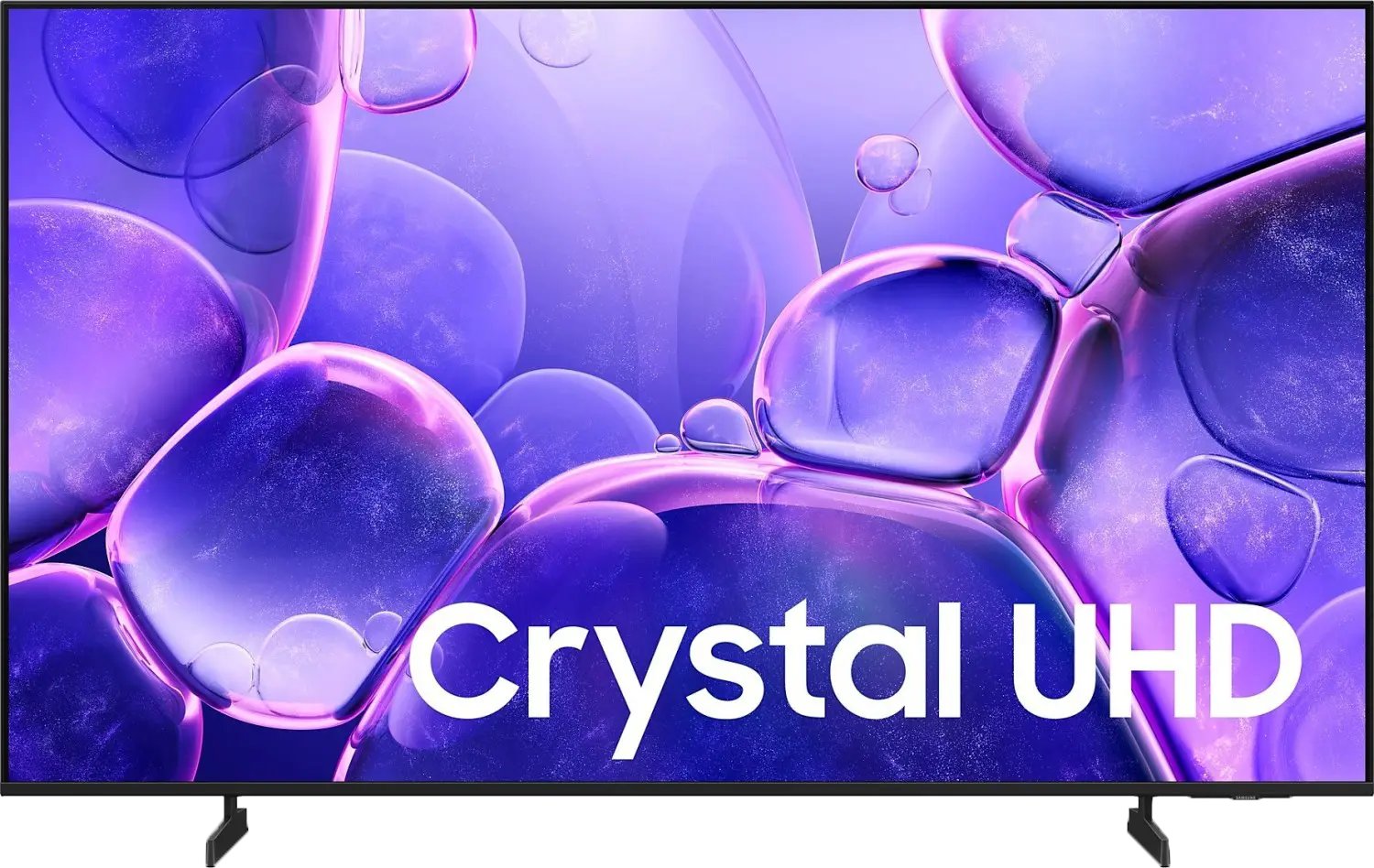
Panel type: LCD IPS
Resolution: 3840x2160
System: WebOS
Model year: 2024
Complete the survey to find out the result

Panel type: LCD IPS
Resolution: 3840x2160
System: Tizen
Model year: 2025
Complete the survey to find out the result

Overall rating
5.9
5.3
Movies and series in UHD quality
5.3
4.8
Classic TV, YouTube
5.4
4.8
Sports broadcasts (TV and apps)
5.7
5.8
Gaming on console
6.5
6.3
TV as a computer monitor
6.0
6.0
Watching in bright light
4.6
3.4
Utility functions
8.3
5.6
Apps
8.0
8.3
Sound quality
6.0
5.7
Complete the survey to find out what fits your preferences
Advantages
Good viewing angles
Intuitive WebOS system with wide access to applications
Magic remote
Suitable for casual gaming - low input lag, ALLM, HGiG
USB recording function from built-in tuners
Smooth image scaling - good reproduction of lower resolution materials
Advanced Smart system: Tizen
Good viewing angles (IPS Matrix)
Great for text work - displays fonts excellently
Low input lag
Basic features for gamers - VRR and ALLM
Disadvantages
Average brightness - 350 nits
Tragic contrast
No Dolby Vision
Low brightness
Very poor black and contrast (IPS panel)
Worse appearance than its predecessor
Infrared remote
Our verdict
The U8000F is a very basic television that may find its buyers among those looking for the cheapest Samsung 4K with Smart TV. And that is exactly its purpose. Thanks to the Tizen system, this model really offers quite a lot in terms of smart features – the number of applications and possibilities may attract those who want a reasonably intelligent device at the lowest possible price. In terms of picture quality – it is average, which is not surprising in this class. Nevertheless, a few pluses can be found: fairly good viewing angles will work well for traditional TV watching from different parts of the room, and the basic features for gamers (like VRR and ALLM) may be sufficient for typical "Sunday" gamers. The PC mode also deserves a plus – the television handles displaying fonts very well, so it can also serve as a cheap monitor. Of course, this is not a model that can be recommended to everyone "sight unseen." But if someone is looking for an affordable Samsung with a 4K resolution and a solid Smart system, then the U8000F is just that kind of device.
TV appearance





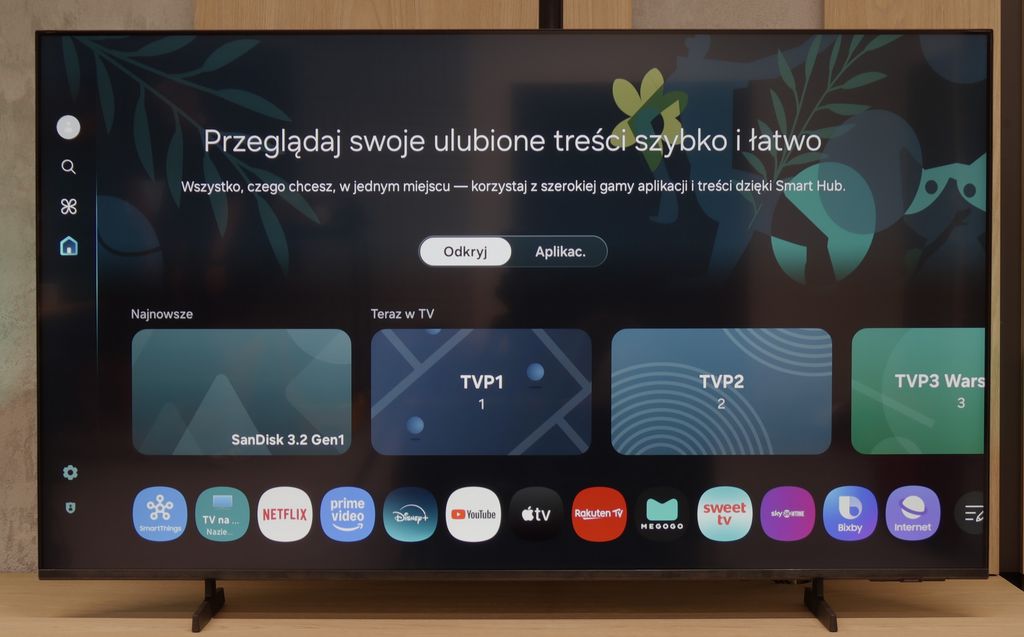
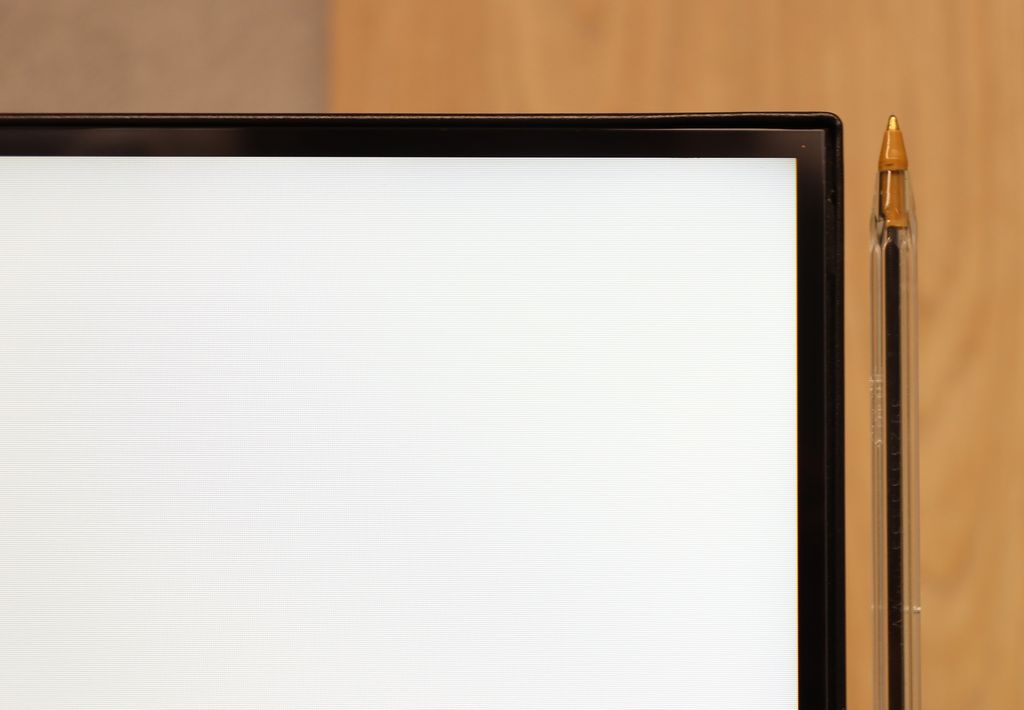

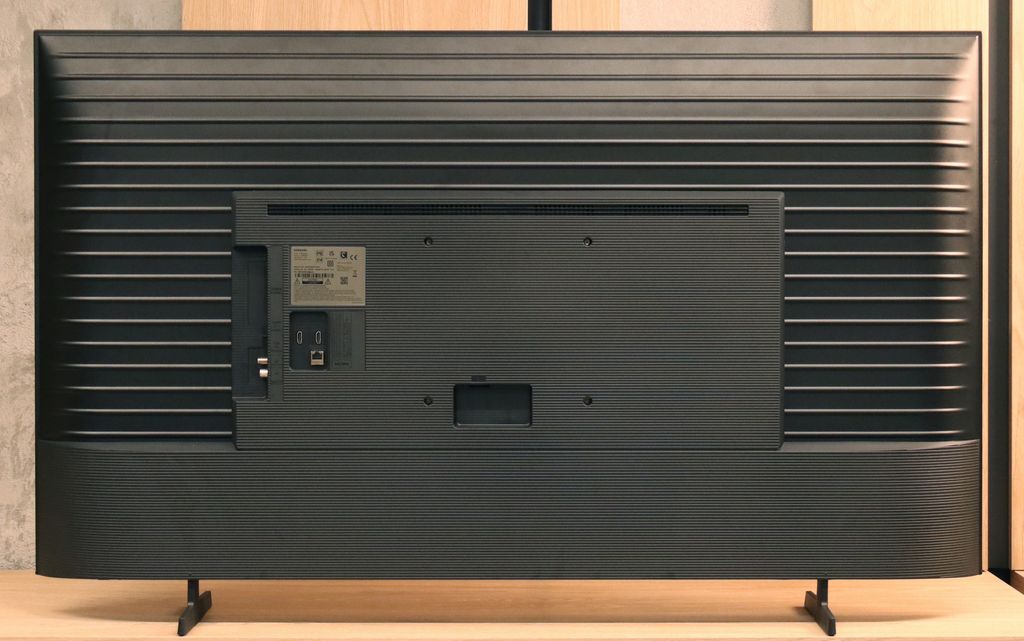
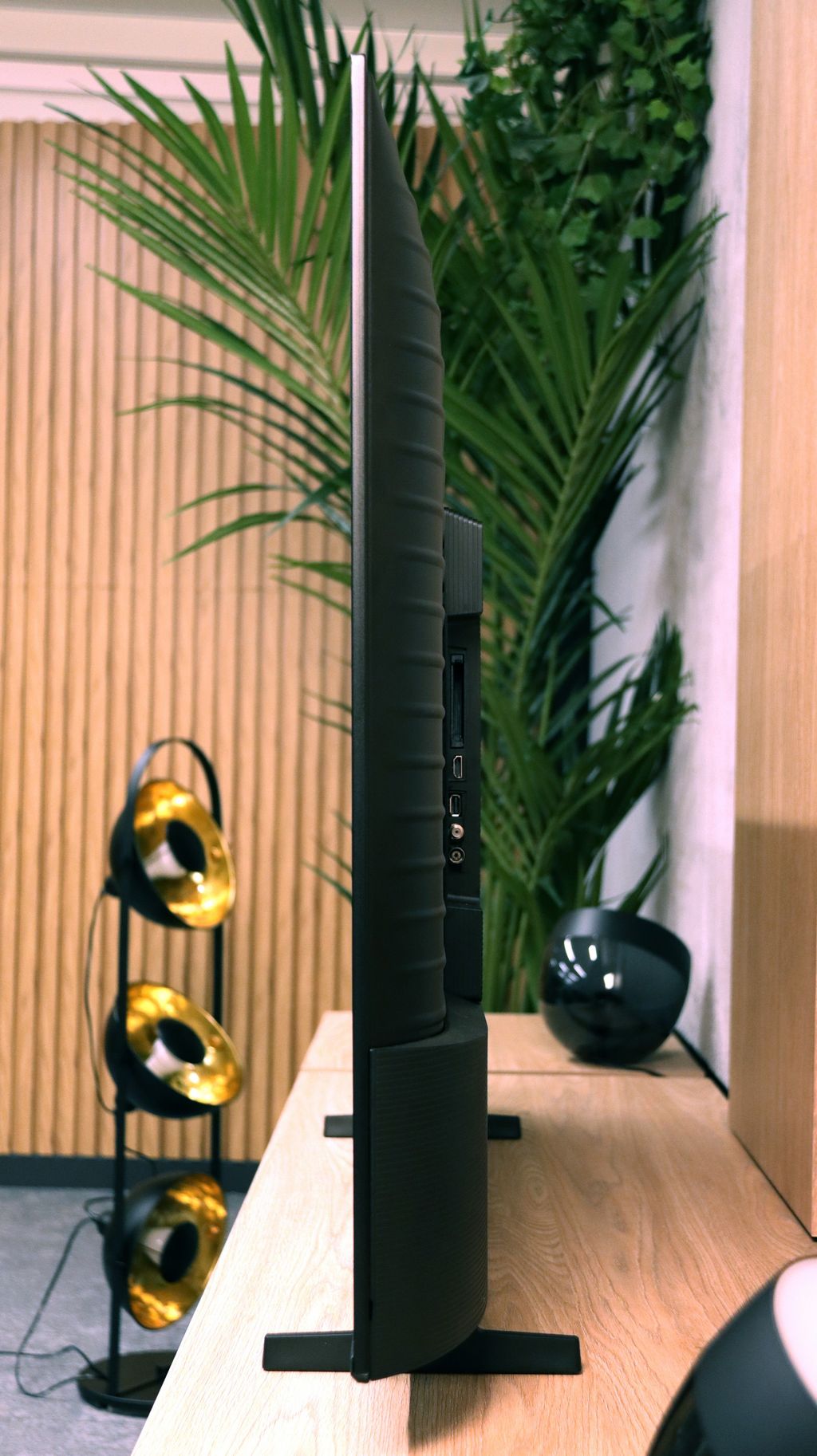
Contrast and black detail
1.9/10
1.1/10
Local dimming function: No
Local dimming function: No
Contrast:

Result
900:1

Result
900:1

Result
1,100:1

Result
1,050:1

Result
900:1

Result
900:1

Result
800:1

Result
700:1

Result
700:1

Result
650:1
Halo effect and black detail visibility:

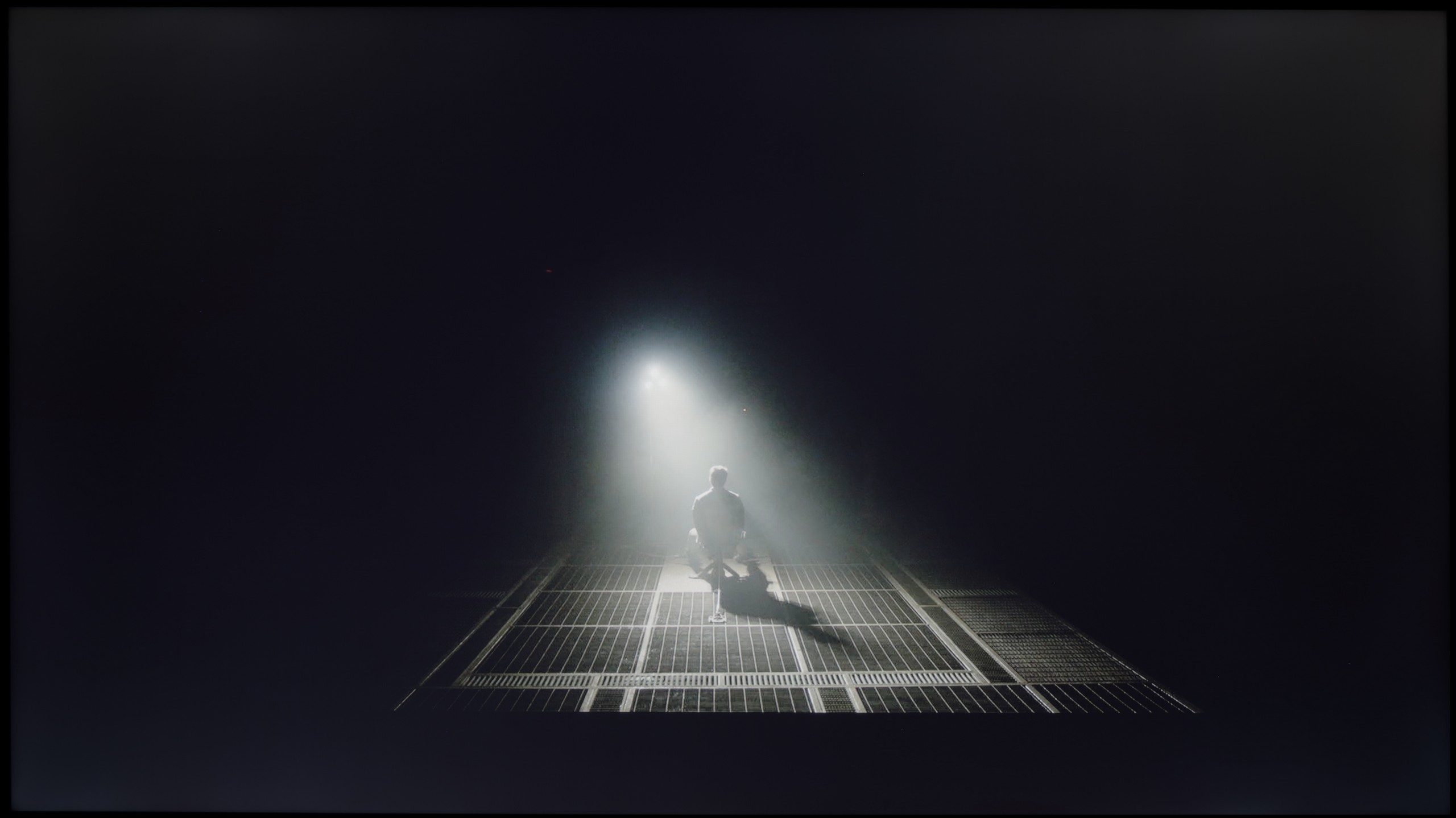
The LG UT8100 television is equipped with an IPS panel, which unfortunately fails to provide satisfactory contrast and black levels. In the tested scenes, such as from the movie Sicario 2, the black resembles a silvery ash rather than deep tar. The lack of local dimming causes details in the dark areas of the image to merge, and the screen appears quite bland in poorly lit rooms. For users seeking deep blacks and vivid contrast, the IPS panel in this model will be disappointing. In this category, the television performs very poorly.
The Samsung U8000F, more specifically the U8092F model in the 55-inch version, is equipped with an IPS panel. Let's be honest – this is not the best choice when it comes to displaying blacks and contrast correctly. The results in this category are just poor. The contrast is abysmal, and watching dark scenes with any kind of "cinematic" effect is nearly impossible. Additionally, the fact that the television lacks local dimming doesn’t help, making it hard to achieve better results. The only thing that deserves praise is the fairly decent uniformity of the panel – but that's more of a small consolation. Overall, it's not good. If you care about deep blacks and reasonable contrast, it's definitely better to go for the variant with a VA panel, which performs significantly better in this particular series.
HDR effect quality
3.7/10
2.7/10
Luminance measurements in HDR:

Result
285 nit

Result
238 nit

Result
326 nit

Result
205 nit

Result
319 nit

Result
191 nit

Result
224 nit

Result
241 nit

Result
79 nit

Result
234 nit
Scene from the movie “Pan” (about 2800 nits)


Scene from the movie “Billy Lynn” (about 1100 nits)


Static HDR10


HDR luminance chart:
Samsung U8000F (IPS)
Luminancja HDR
Luminance of RGB colors
LG UT8100 (IPS)
Luminancja HDR
Luminance of RGB colors
The LG UT8100 television unfortunately does not meet expectations in the HDR effect category. The peak brightness of only 300 nits on the luminance graph is significantly below the required value to fully enjoy HDR effects. In practice, the image resembles SDR quality more than true HDR, which is particularly evident in demanding high-contrast scenes. The coverage of the DCI-P3 color palette is only 82%, which further limits the ability to present vibrant and rich colors. Instead of impressive visual experiences, we get a muted and washed-out image. For those looking for a television to fully utilize HDR content, the LG UT8100 model proves to be highly disappointing.
Better does not mean good – and that perfectly summarizes the capabilities of the U8092F when it comes to displaying bright movie scenes in HDR mode. The brightness of the panel is just under 250 nits, which is definitely too little to enjoy any lighting effects. An interesting situation was noted during the measurement of the fourth scene from the movie Sicario 2 – the television clearly dimmed the entire screen in an attempt to achieve better black levels (which are still weak). One could even suggest that the device uses some form of "global dimming," but unfortunately, the results are still very poor. To make matters worse, the television does not support a wide color gamut – the coverage of the DCI-P3 space is about 80%, so there’s no hope for truly vibrant colors. HDR images here look rather like lightly brightened SDR, and that's the form we would suggest sticking to when it comes to this television.
Factory color reproduction
5.5/10
6.5/10


Factory Mode
After calibration
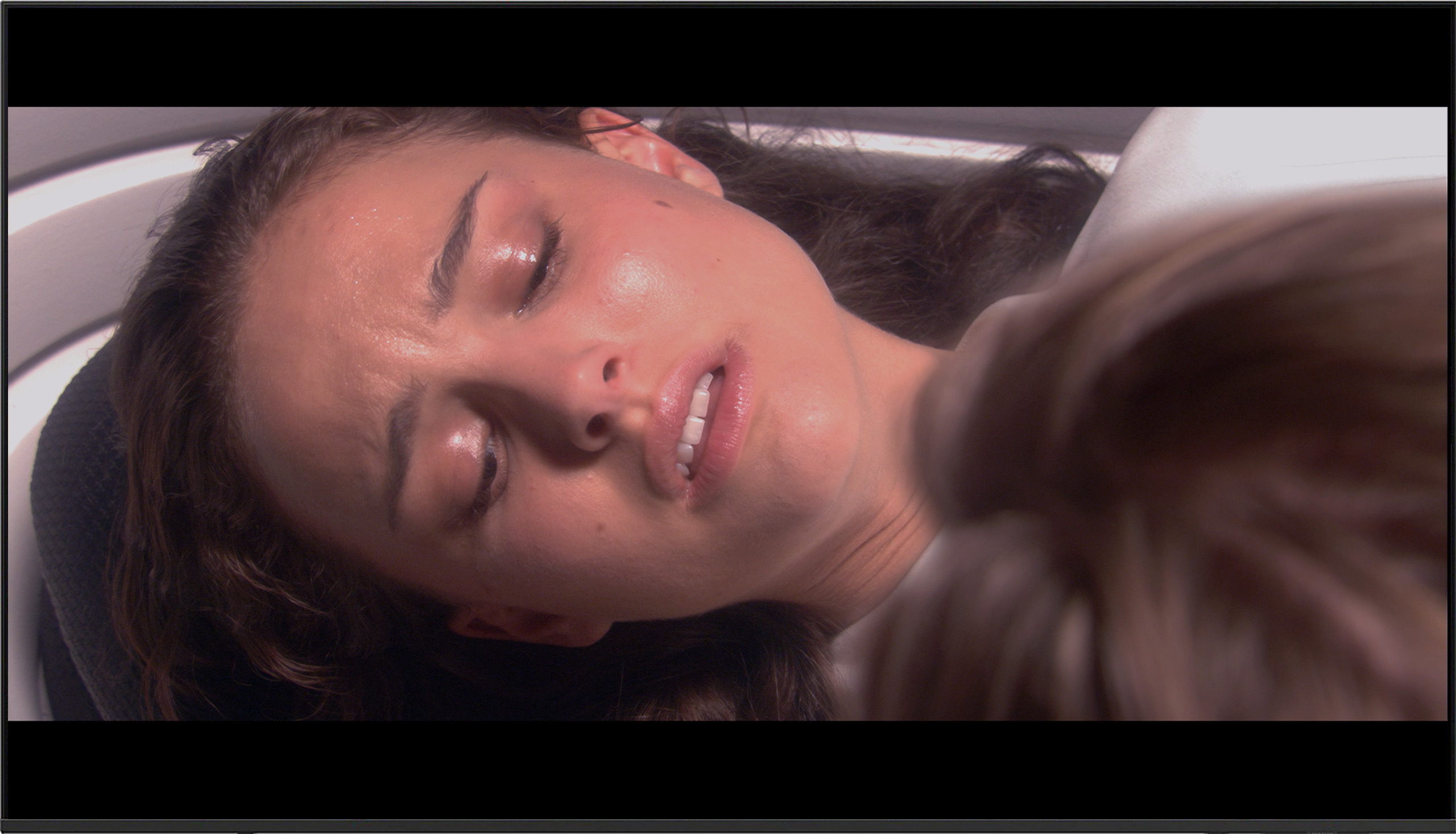
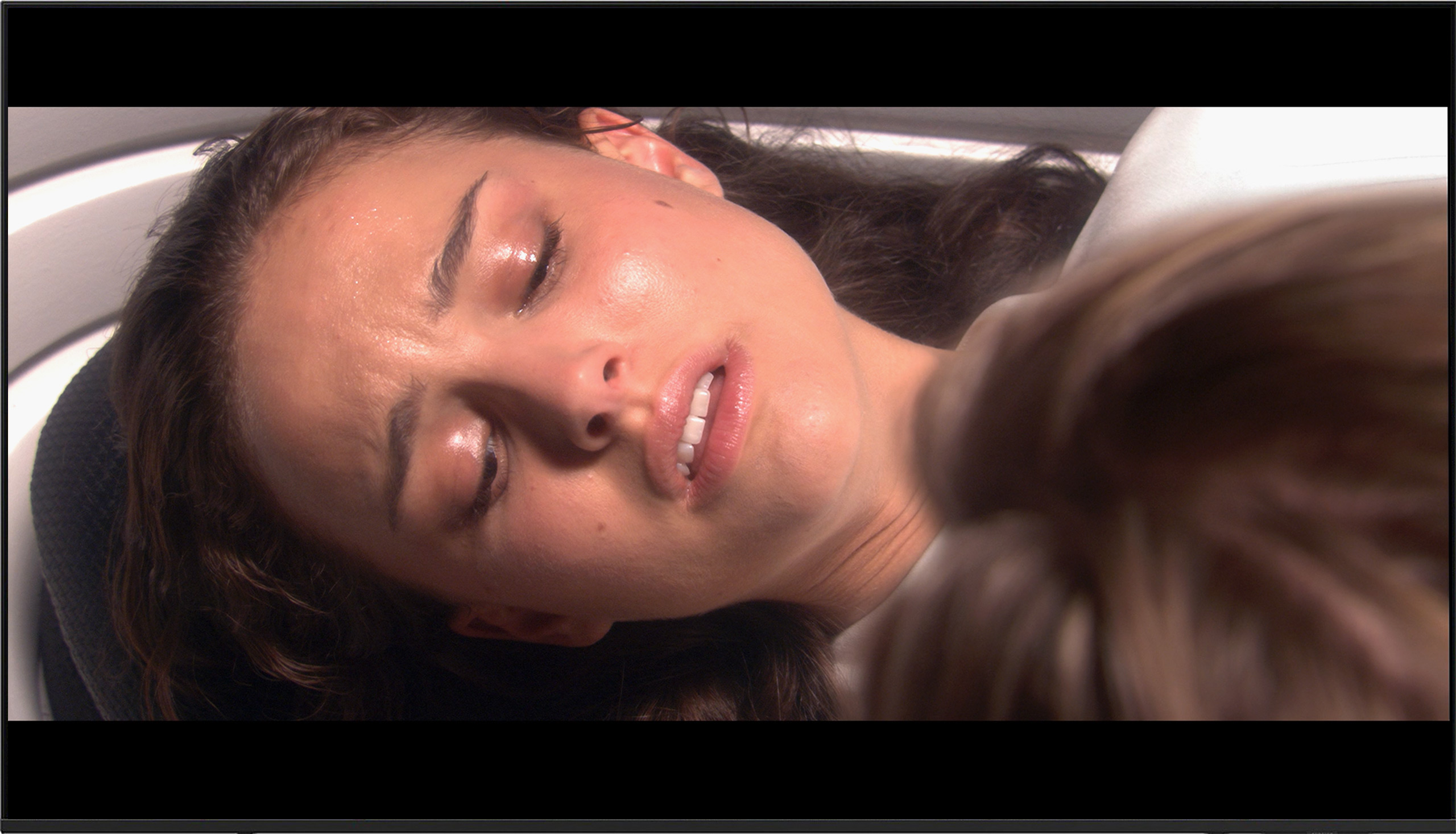
Factory Mode
After calibration
The Filmmaker Mode on LG UT8100, although theoretically the best for watching movies, has significant flaws. The biggest issue is white balance – drops in blue color cause noticeable yellowing of the image, visible in both HD and 4K content. These errors are confirmed by the measurement results in the Colour Checker test, which indicate significant deviations in color reproduction.
As for brightness characteristics, both HD and 4K content feature a high tonal boost. The gamma curve in both cases remains well below the reference value of 2.4, leading to excessive brightening of darker elements in the image. A similar problem is evident in the EOTF curve – in the case of 4K content, the TV struggles with proper brightness management, resulting in issues with screen brightness. This means that the factory settings of this model require significant adjustment to achieve better image quality.
The Samsung U8000F was tested in the best possible picture mode built into the TV, which is Filmmaker Mode. This mode should – at least in theory – offer a cinematic, reference-quality image without unnecessary enhancements. For SDR content (mainly HD/SD), the TV performed surprisingly well straight out of the box. White balance errors hovered around a value of 3, which is roughly at the threshold of perception. The only complaint could be about brightness management – the gamma chart showed a slight tendency to brighten or darken certain areas, but overall it performed quite well for this price segment.
Unfortunately, it looks much worse in HDR mode. Although the white balance wasn't terrible, the TV had significant color errors – particularly noticeable on the Color Checker chart, where almost every sample landed outside the target point. The HDR image simply looks unnatural, and colors can be shifted, dull, or too cool. This largely stems from the fact that the U8000F does not support a wide color gamut (DCI-P3). The TV is physically incapable of displaying accurate colors in HDR standard – and this unfortunately shows in every more demanding material.
Color reproduction after calibration
8/10
7.5/10




After calibrating the Filmmaker Mode, the gamma has been aligned to practically ideal, reference values, which significantly improved the overall tonal characteristics in HD content. 4K HDR content also looks better, although some issues are still visible at the end of the graph, where the curve deviates from the ideal. The EOTF curve performs worse, as the television struggles to maintain appropriate brightness values. As a result, the image in some scenes may be overly bright or slightly dimmed, which stems from the device's design. Nevertheless, the calibration has brought significant improvements, especially in the case of HD content, where tonal balance and color reproduction are now at a much higher level.
Although the U8000F offered quite a decent picture in SDR right out of the box, we were able to adjust it a little more. We managed to eliminate a slightly purplish tint and calibrate the gamma to a more reasonable level. However, the television still tends to overemphasize the smallest and brightest parts of the image – the gamma chart shows a characteristic "dip" that is difficult to completely correct.
Unfortunately, the situation looks worse in HDR. It's hard to talk about any significant improvement here – the television is simply not designed for HDR content. We tried to adjust the picture in the advanced settings, but despite everything, the color errors remained quite large – a delta E above 7 indicates noticeable deviations. It's a bit of a shame, but that's the charm of a budget design. In SDR, the U8000F performs just fine, while HDR is simply not its league.
Smoothness of tonal transitions
9/10
9/10





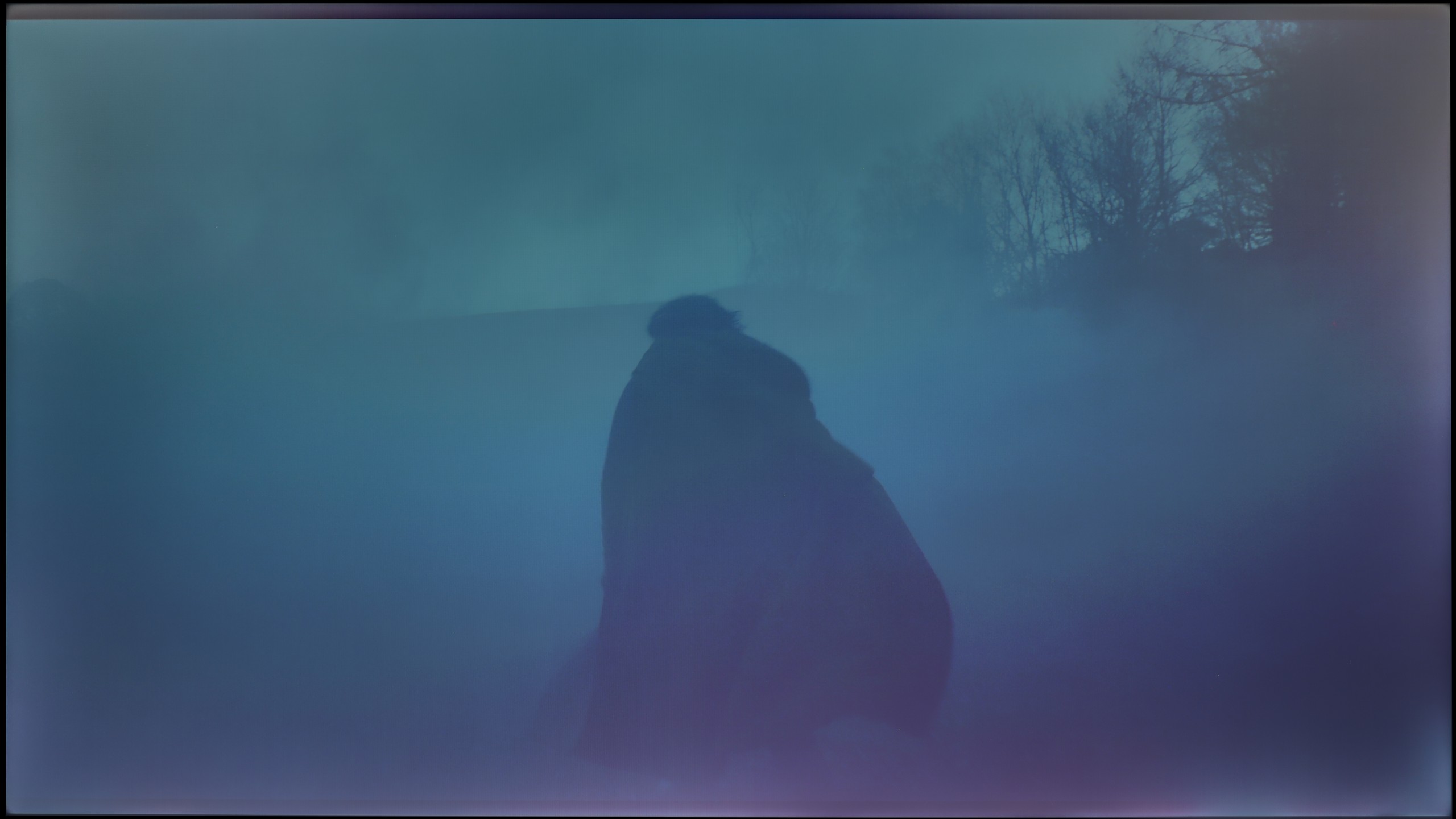






The fluidity of tonal transitions in LG UT8100 is at a very high level. The color gradation is almost perfect, and the transitions between shades are smooth and free of visible seams. This is definitely one of the strong points of this model. Unfortunately, the unevenness of the panel's backlighting draws attention, which can be noticeable in more homogeneous scenes, particularly in the darker areas of the image. Although the gradation itself is excellent, the unevenness of the matrix slightly detracts from the overall impression of quality.
Another important thing to pay attention to when assessing image quality is the smoothness of tonal transitions – that is, how well the television handles blending colors and shades. Here, the Samsung U8092F performs... almost perfectly. On the tested screens, there are no visible banding issues, no problems with color gradients, and the overall image is not artificially sharpened, which unfortunately happens in many televisions of this class. The image looks natural and very clean. We noticed minimal issues with the brightest scenes, but that’s more of nitpicking that only a very discerning eye would catch.
Image scaling and smoothness of tonal transitions
7.3/10
5/10
Smooth transition function

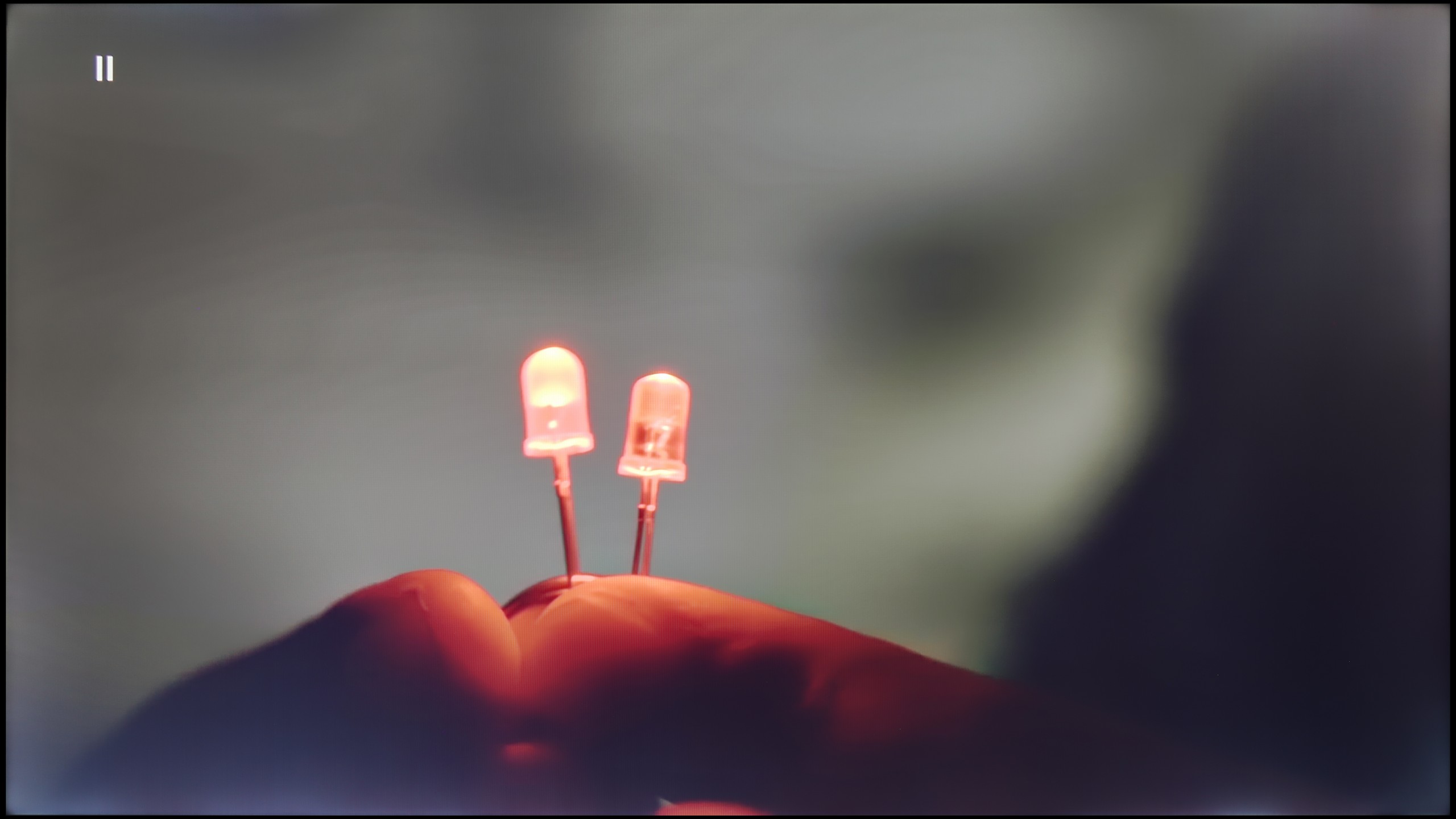
Image without overscan on the SD signal


The fluidity of tonal transitions is also correct, although the effect depends on the settings. The update improved the functionality of smooth gradation, smoothing transitions better than before, but introduced minor issues with loss of detail, e.g., on textures.
Image scaling on LG UT8100 performs very well. The image presents itself decently, without major issues with edge aliasing. Details are preserved at a satisfactory level, which makes lower-resolution materials look really solid on this TV. As a result, users can enjoy watching older content without obvious quality flaws.
When it comes to how the Samsung U8000F handles lower-quality materials, we have to admit that Samsung has made progress compared to its predecessor from last year – the DU7192 model, which theoretically occupies the same place in the lineup.
This year's model is equipped with a function to improve the fluidity of tonal transitions, which has been implemented much better than last year. Yes, the television still uses quite strong algorithms that can distort details or remove film grain, but even so – it can be confidently said that it works effectively.
However, not everything went perfectly. The U8000F has noticeable issues with slight frame cutting when watching very old content in very low resolution. If someone plans to play their old VHS tape, they should be prepared for the image to appear slightly “cut off.”
Blur and motion smoothness
4.9/10
6/10

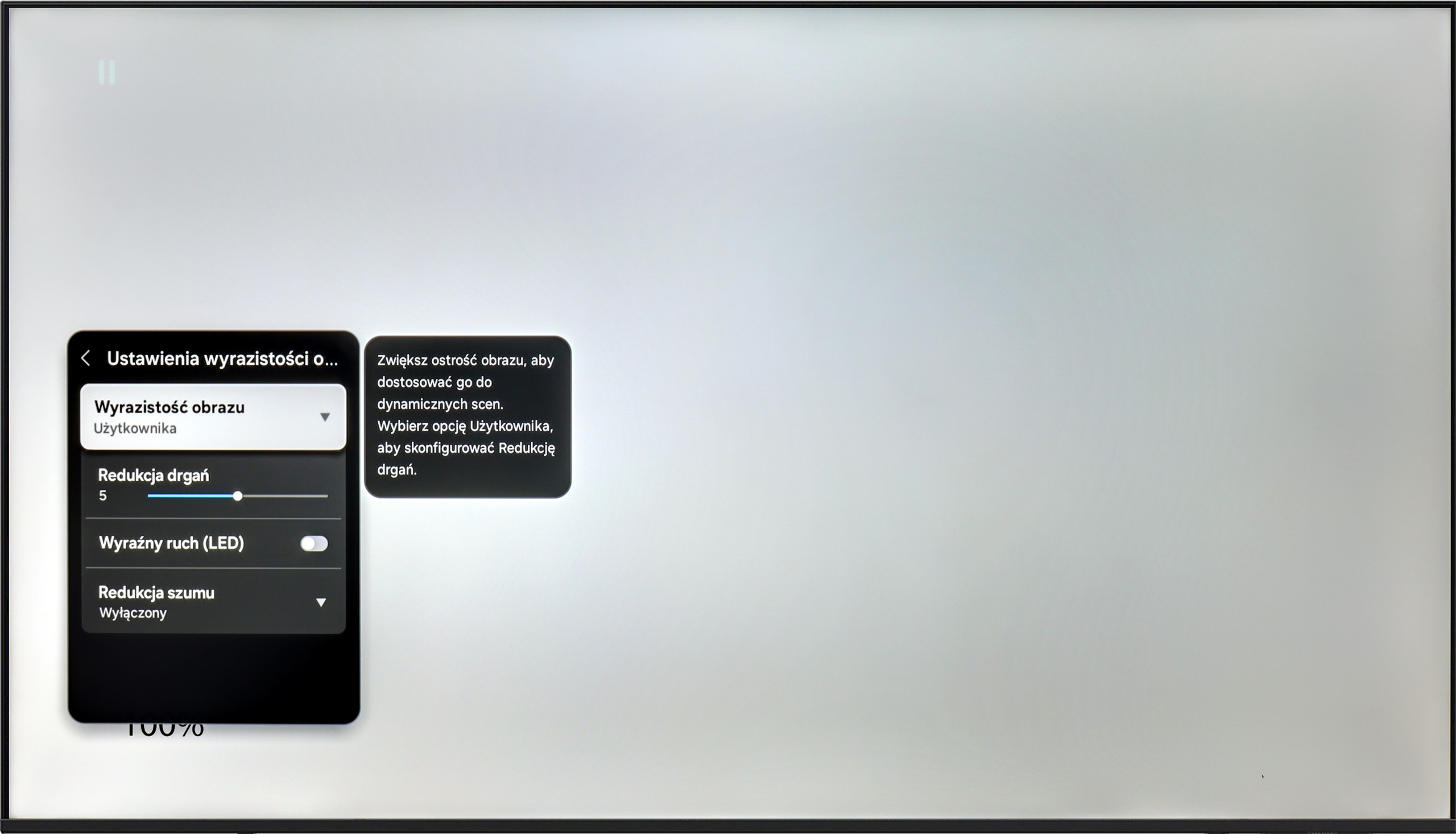
Blur (native resolution, maximum refresh rate):




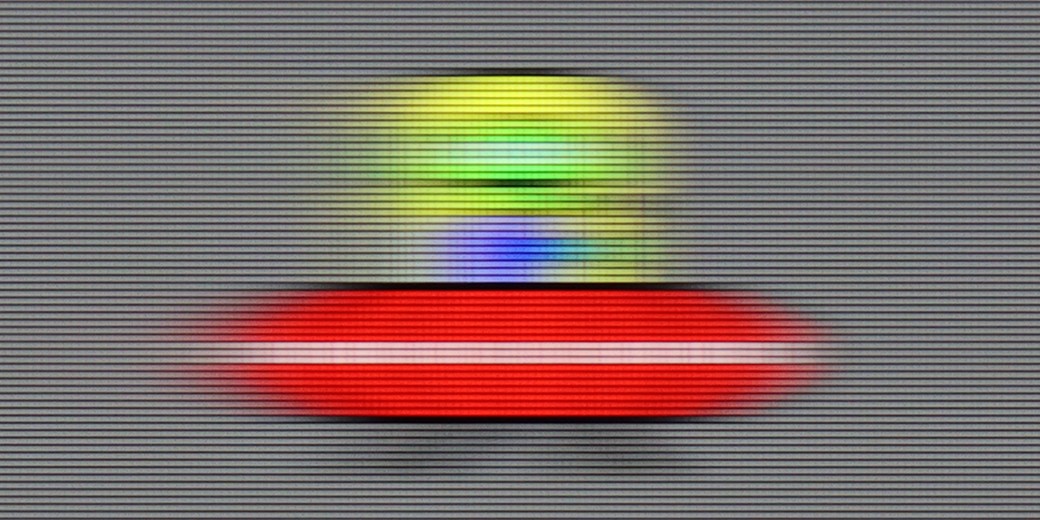
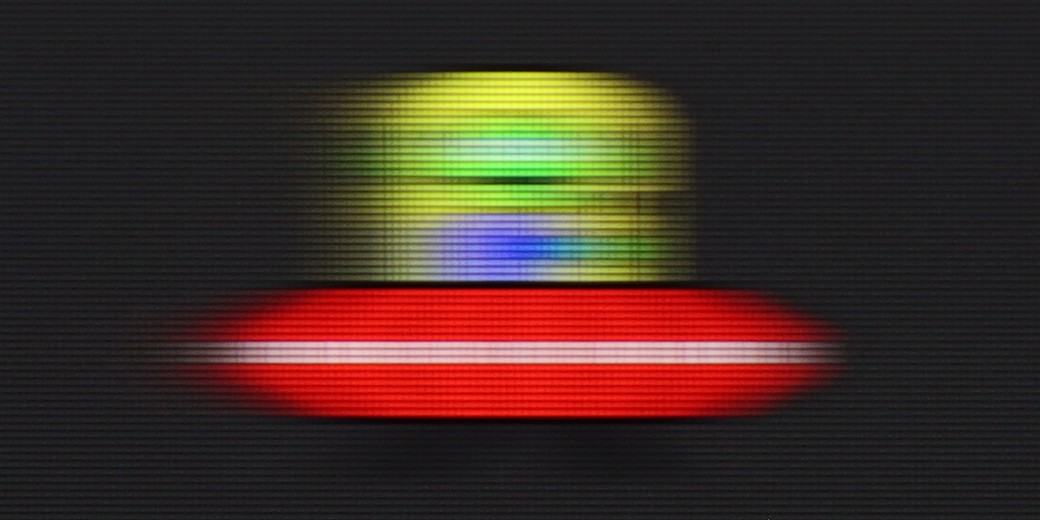
LG UT8100, equipped with a 60 Hz display, will be especially suitable for people watching movies. The television offers the TruMotion system with de-judder effect adjustment, allowing users to customize the fluidity of the image – from more choppy to exceptionally smooth, reminiscent of a soap opera effect, depending on user preferences.
The Samsung U8000F is equipped with a 60 Hz panel, so right from the start, it’s clear that we shouldn’t expect any miracles. This is simply the standard in this class – sufficient for everyday viewing, but without any fireworks.
The TV offers one motion smoothing slider – a feature called "Motion Blur Reduction", which allows us to adjust the smoothness of the image in movies. Higher settings provide a more "theatrical" and smoothed effect, while lower settings help retain the original character of the film with a slight 24p effect. Interestingly, there is a feature called "Clear Motion LED", which is a BFI mode – that inserts black frames between the frames of the picture to improve motion clarity. However, in practice, the screen flickers significantly when activated, and it should be regarded more as an experiment than something that realistically enhances gaming comfort.
Console compatibility and gaming features
4.7/10
4/10
- ALLM
- VRR
- VRR range48 - 60Hz
- Dolby Vision Game Mode
- Correct implementation of HGIG
- 1080p@120Hz
- 1440p@120Hz
- 4K@120Hz
- Game bar

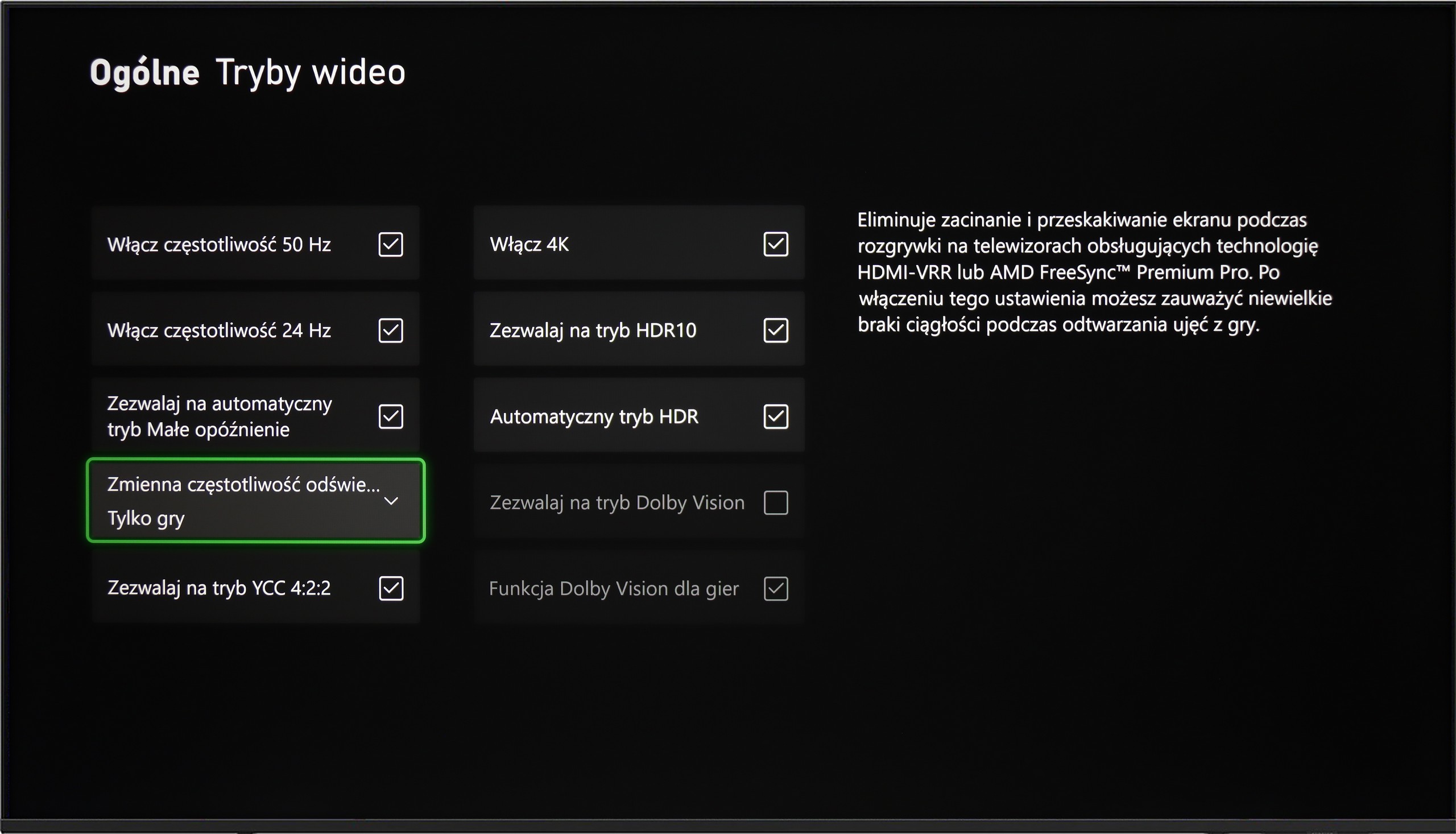



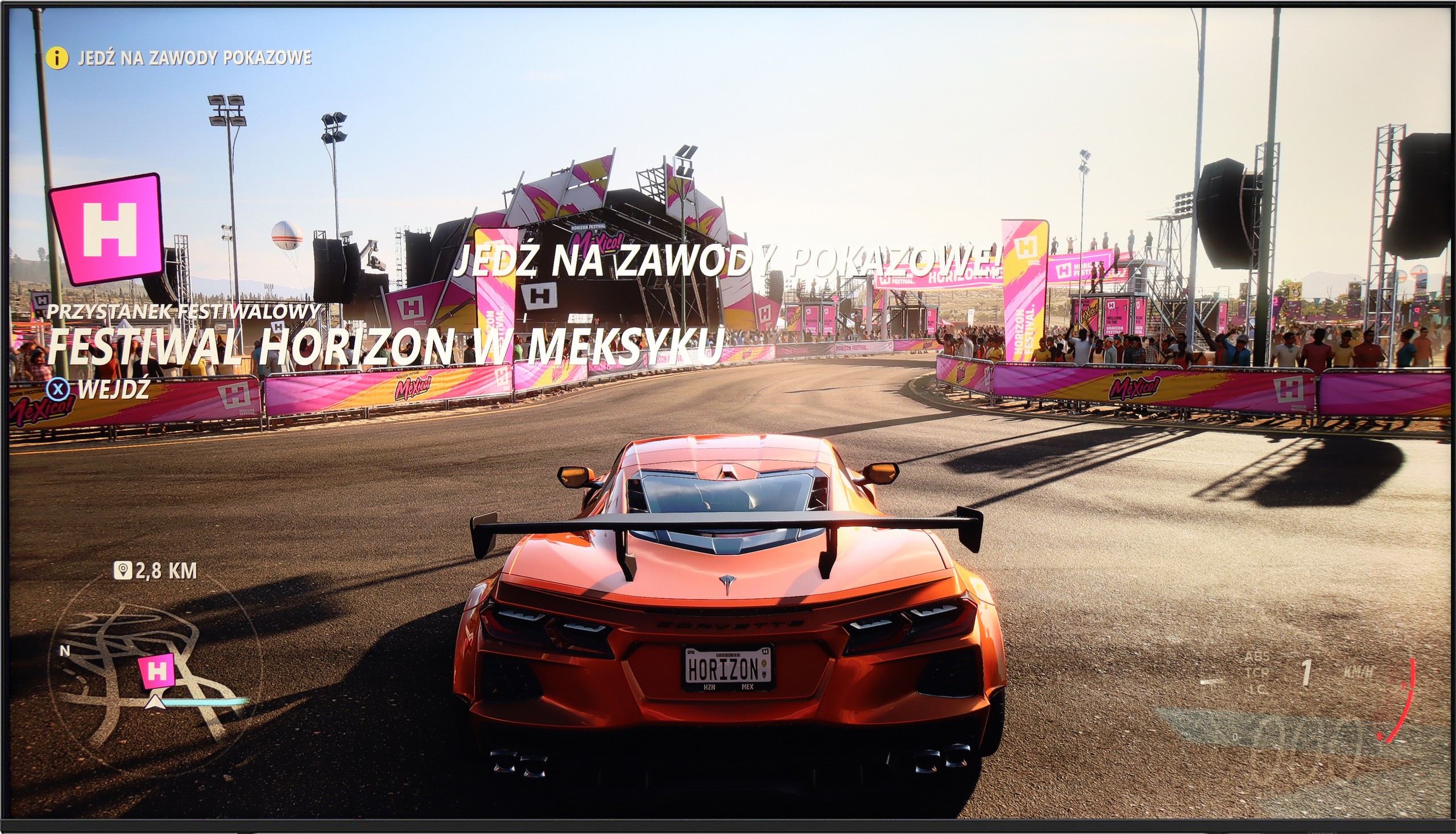


LG UT8100 offers basic features for gamers, such as ALLM and Game Bar, which makes access to settings easier. The TV also supports HGiG, which improves image quality in HDR games. Unfortunately, the lack of support for Dolby Vision and VRR limits the capabilities of the device, as does the 60 Hz panel, which excludes support for 120 Hz resolution. This model will be more suitable for less demanding gaming applications.
Samsung U8000F offers a basic set of features for gamers, which nonetheless may be sufficient for less demanding users. We have an automatic game mode here – when a game is launched on the console, the TV automatically switches to low latency mode, which significantly improves response time. We also find the VRR feature, or variable refresh rate, which operates within a range of 48 to 60 Hz. This means that both Xbox and PS5 will not produce the "tearing" effect, as long as we stay within this range.
And unfortunately, that's about it for the advantages. Add-ons like Game Bar or higher refresh rates are reserved for the higher models of Samsung from the 2025 line. In theory, the TV also supports the HGiG feature, which should adjust HDR images to the intentions of game developers. Unfortunately – even though this feature appears in promotional brochures and store materials – its configuration on the Xbox console turned out to be... impossible in practice.
Input lag
10/10
10/10
SDR
HDR
Dolby Vision
LG UT8100 achieves an impressively low input lag of 10 ms, which is a great result, especially for gamers. This television provides quick response and smooth experiences during gameplay, even in fast-paced games.
The Samsung U8092F performed phenomenally in our input lag tests. Regardless of the resolution or mode, the results were very low, which is truly impressive for this price range. It can be safely said that gaming on this television will not cause irritation due to significant delays between what we do on the controller and what we see on the screen. For most gamers, even those who are more demanding, this result should be more than satisfactory.
Compatibility with PC
6/10
6/10

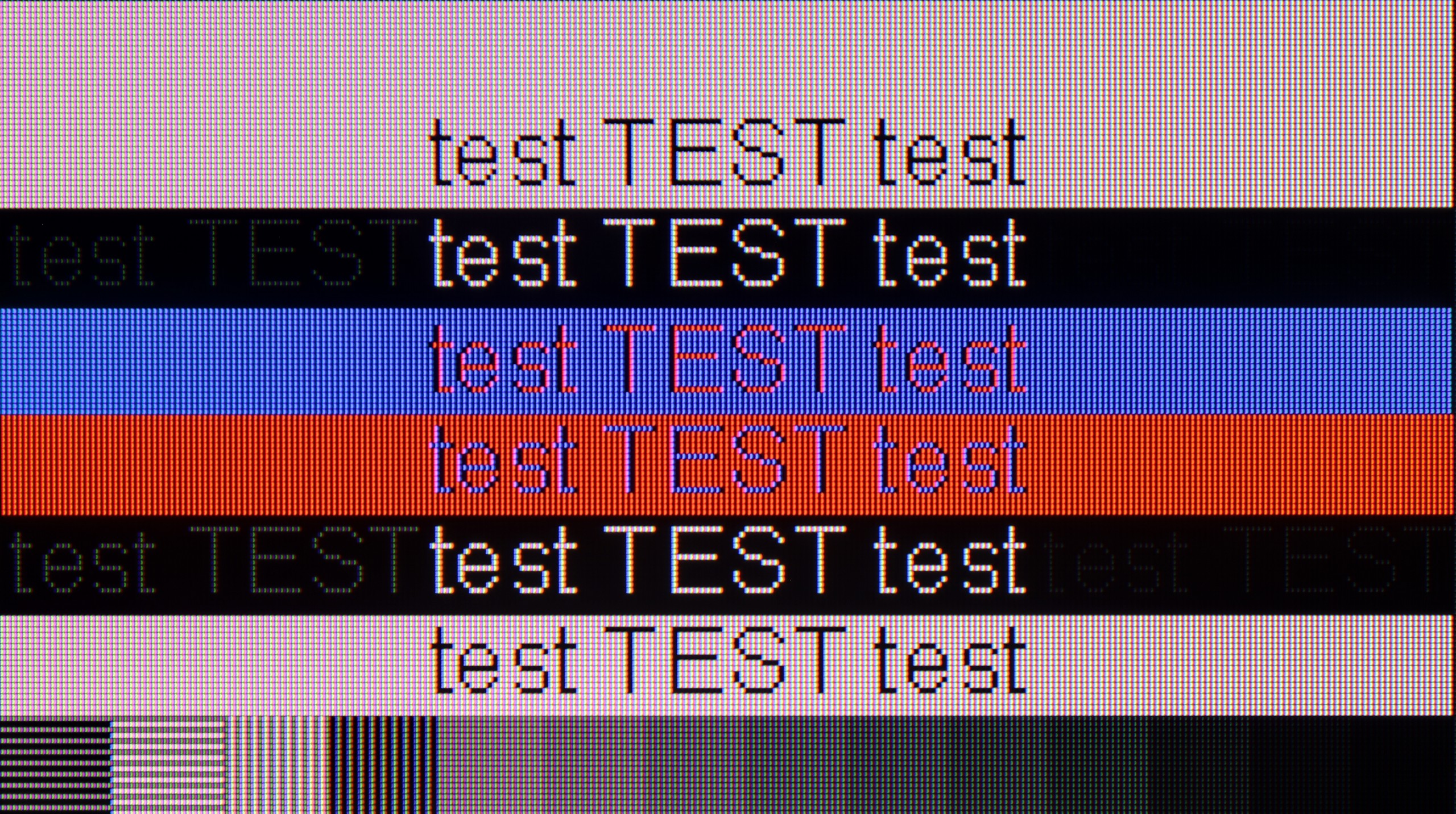
LG UT8100 will perform well as a work monitor thanks to support for chroma 4:4:4, which ensures very good readability of fonts regardless of the background. In terms of gaming, the TV offers a 60 Hz panel and low input lag, making it suitable for less demanding applications. Unfortunately, the lack of support for features such as G-Sync limits its capabilities in more advanced gaming scenarios.
Working on a computer using this TV is a real pleasure. The Samsung U8092F supports chroma 4:4:4, and thanks to the layout of the sub-pixels in the IPS panel, text readability – regardless of color or size – is very, very good. The TV is also suitable for occasional gaming on PC, mainly due to its low input lag. However, one must keep in mind that the G-Sync feature does not work on this model, which is strange because VRR worked without any issues when it comes to the console.
Viewing angles
6.3/10
7/10
Thanks to the use of an IPS panel, LG UT8100 offers quite good viewing angles. The image remains clear and does not lose much quality, even when viewed from the side. Colors are well preserved, and brightness and contrast decrease in a noticeable but moderate way. This is particularly important in rooms where viewers sit at different angles to the screen. In this category, the television performs solidly, standing out compared to models with VA panels.
The viewing angles on the Samsung U8092F are very good – as is expected from an IPS panel. The picture doesn’t lose much in brightness or color saturation, even at greater angles from the axis. Of course, it's not on the level of organic screens – but it’s entirely sufficient for comfortably watching the image at an angle, e.g., from the side of the sofa.
TV efficiency during daytime
4.6/10
3.4/10

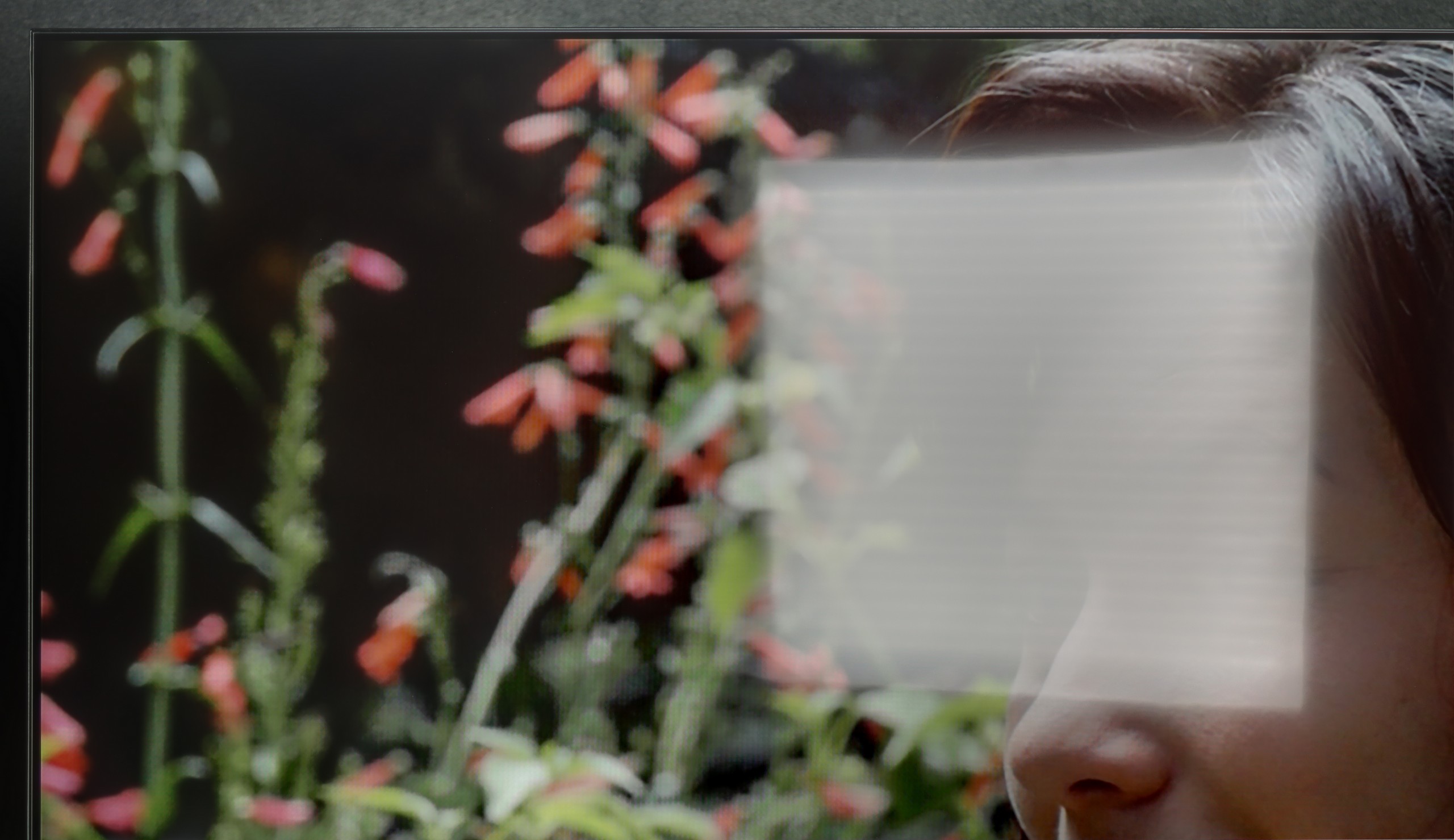

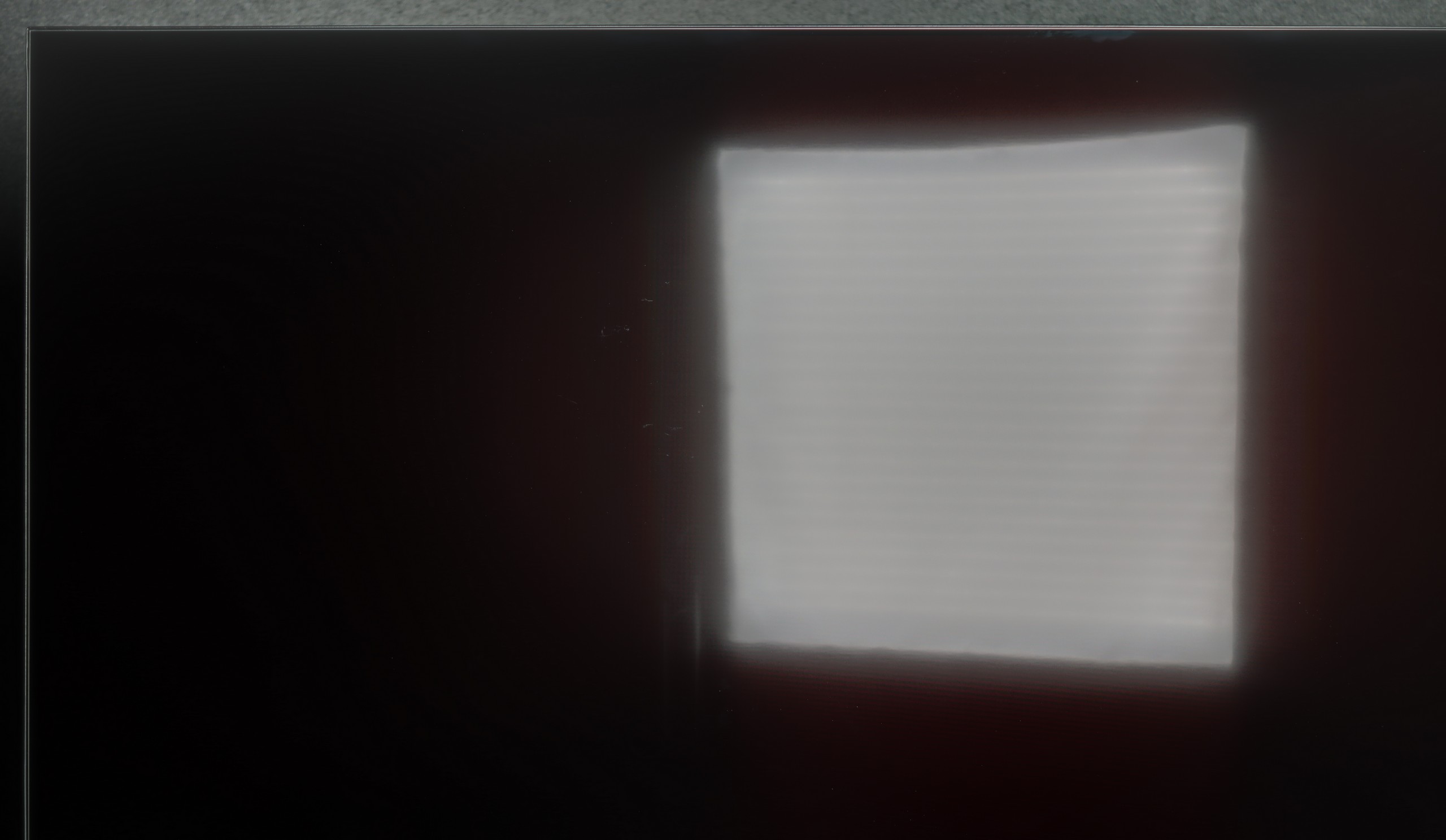
Matrix brightness
Average luminance SDR
Samsung U8000F (IPS): 218 cd/m2
LG UT8100 (IPS): 345 cd/m2
LG UT8100 is equipped with a satin matrix coating, which averages out in terms of reflection suppression. A brightness level of 350 cd/m² is sufficient in moderate lighting conditions, such as a typical living room. However, in very bright rooms, the TV may struggle to maintain image readability, especially on sunny days. It will perform best in places where lighting can be partially controlled.
Thanks to the satin coating of the Samsung U8092F matrix, it handles glare quite well. The screen does not act like a mirror, and the colors – considering the capabilities of this class of devices – remain fairly saturated, even in somewhat brighter conditions. Unfortunately, the coating itself cannot perform miracles. The television is simply too dark to effectively penetrate very challenging lighting conditions. If we place it in front of a light source (e.g., a large window or a strong lamp) – unfortunately, one must consider that not everything will be clearly visible on it.
Details about the matrix
Subpixel Structure:

Panel uniformity:


LG UT8100 (IPS)
Samsung U8000F (IPS)
TV features
8.3/10
5.6/10
- HDMI inputs3 x HDMI 2.0, 0 x HDMI 2.13 x HDMI 2.0, 0 x HDMI 2.1
- OutputsToslink (Optical audio), eARC (HDMI), ARC (HDMI)eARC (HDMI), ARC (HDMI)
- Network InterfacesWi-Fi 2.4GHz, Wi-Fi 5GHz, Ethernet (LAN) 100MbpsWi-Fi 2.4GHz, Wi-Fi 5GHz, Ethernet (LAN) 100Mbps
- TV receptionDVB-T, DVB-T2, DVB-S, DVB-S2, DVB-CDVB-T, DVB-T2, DVB-S, DVB-S2, DVB-C
Classic features:
- Recording to USB (terrestrial TV)
- Recording programming
- Picture in Picture (PiP)
- RF remote control (no need to aim at the screen)
- Backlit remote control
- Teletext
- Audio only mode
- Possibility to connect Bluetooth headphones to the TV
- Possibility to simultaneously use Bluetooth headphones and the TV speaker
Smart features:
- AirPlay
- Screen mirroring (Windows Miracast)
- Wyszukiwanie głosowe
- Voice search in native language
- Ability to connect a keyboard and mouse


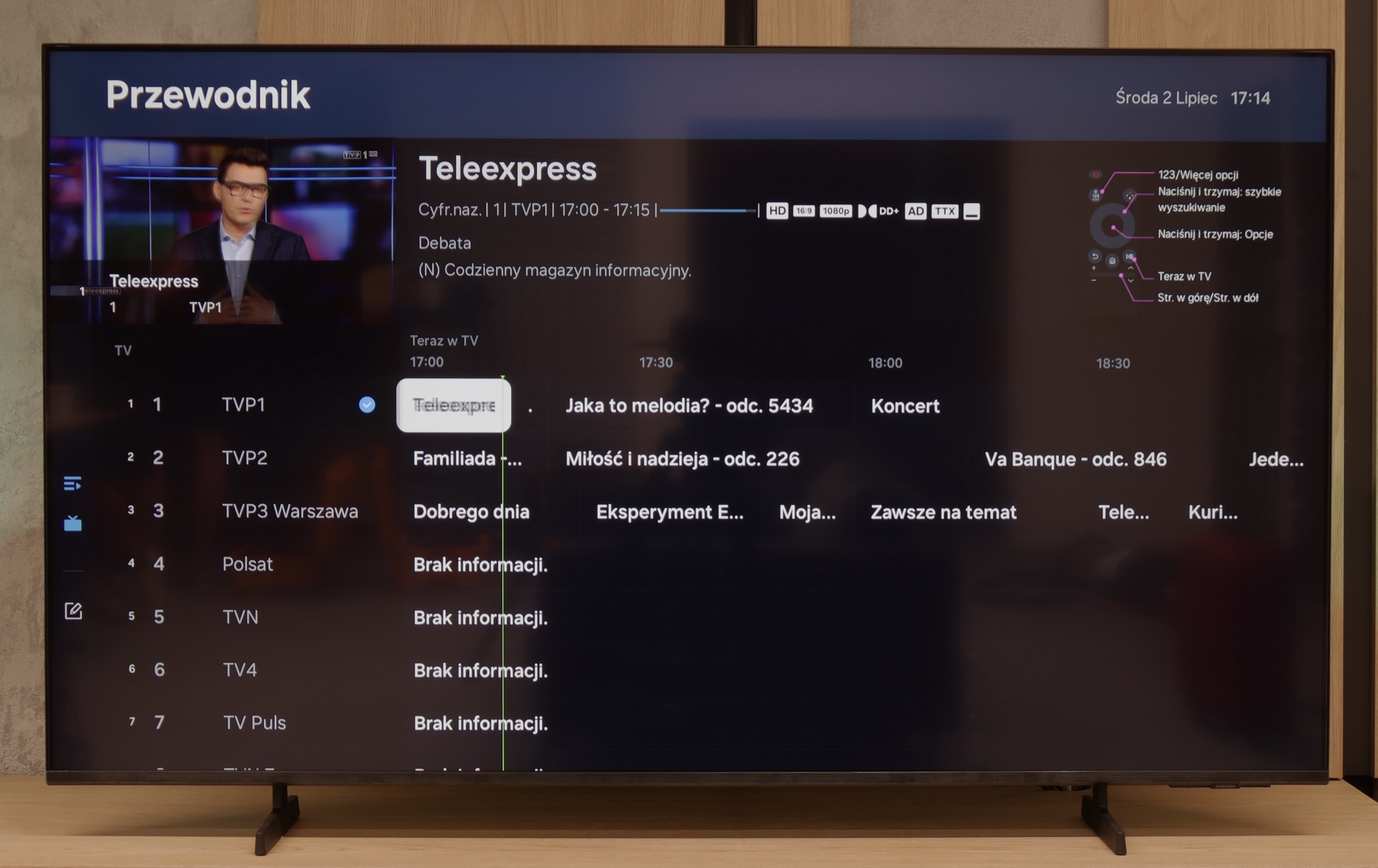

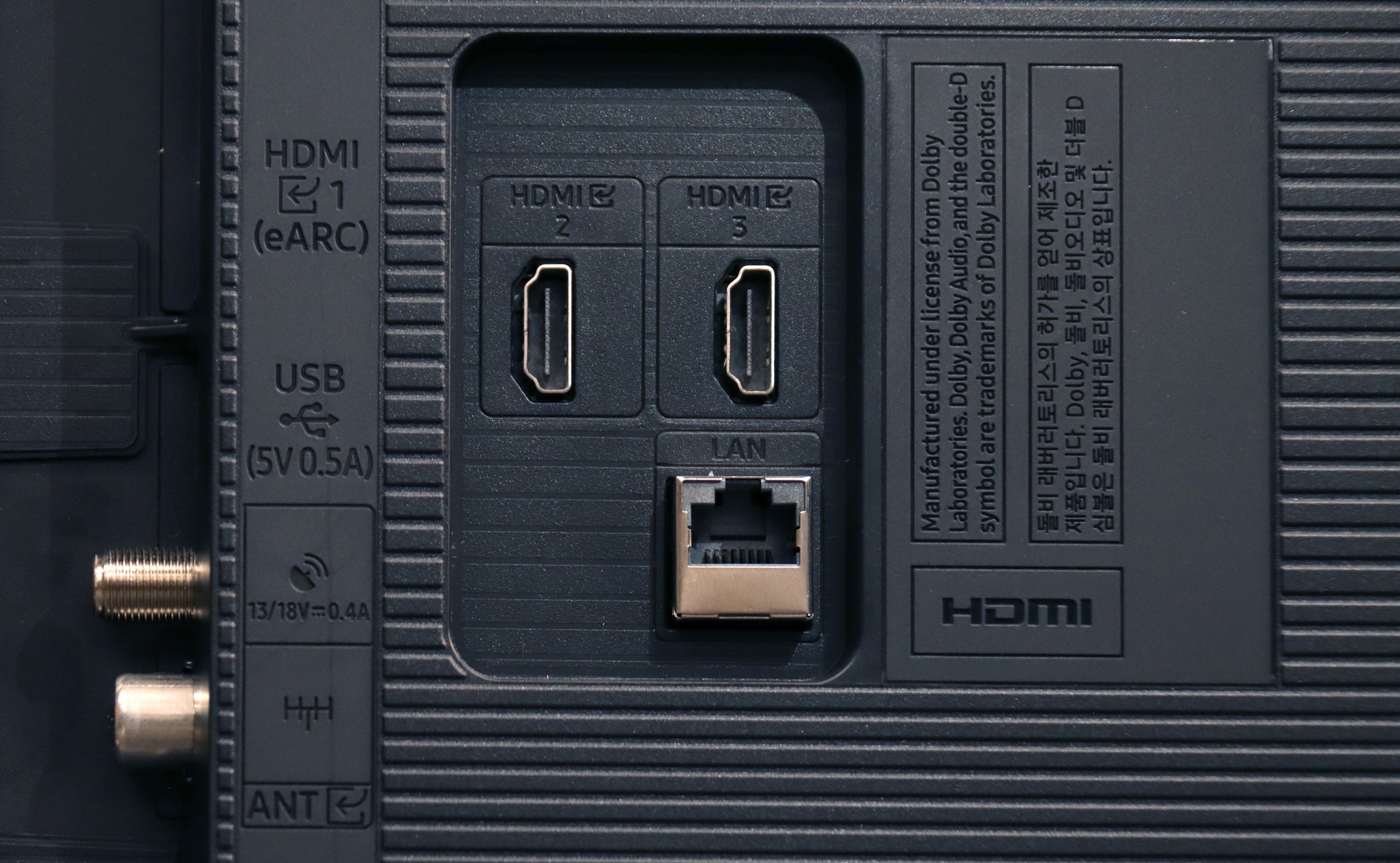
LG UT8100 operates on the WebOS system, which stands out for its intuitiveness and rich features. The Magic remote, with support for voice commands in Polish, further facilitates navigation. The television offers access to virtually all popular applications, such as Netflix, YouTube, Disney+, and Amazon Prime Video, making it a great multimedia hub.
In terms of user functionality, the television meets most expectations. We find all the necessary TV tuners and the ability to record to USB, which allows for saving favorite programs. It's easy to connect a keyboard, headphones, or other devices via Bluetooth. Unfortunately, the lack of PiP (picture in picture) functionality may be a minor disappointment, although it is not surprising at this price point.
Everyday use of LG UT8100 is pure pleasure – the simplicity of operation and versatility of features make it excellent both as a home television and as a multimedia device.
Samsung U8092F – like all this year's models from this brand – runs on the Tizen operating system. The system itself is really well developed: we have access to many applications (though not all), a well-developed smart home support, and various add-ons, including exclusive Samsung apps. There are also features like AirPlay or Chromecast, which make it easy to connect a phone to the TV and transfer multimedia.
Unfortunately, since this is Samsung's cheapest series in 2025, the manufacturer did not decide to include a solar remote. In the package, we find a classic infrared remote, which visually resembles a newer version, but unfortunately lacks voice functions. As for typically "TV" features – it lacks recording functions and PiP (picture-in-picture) mode. On the plus side, however, HDMI eARC works well, allowing you to easily control devices from the set such as a decoder or soundbar – and it really works seamlessly.
Playing files from USB
8.2/10
8.7/10
Supported photo formats:
Maximum photo resolution:

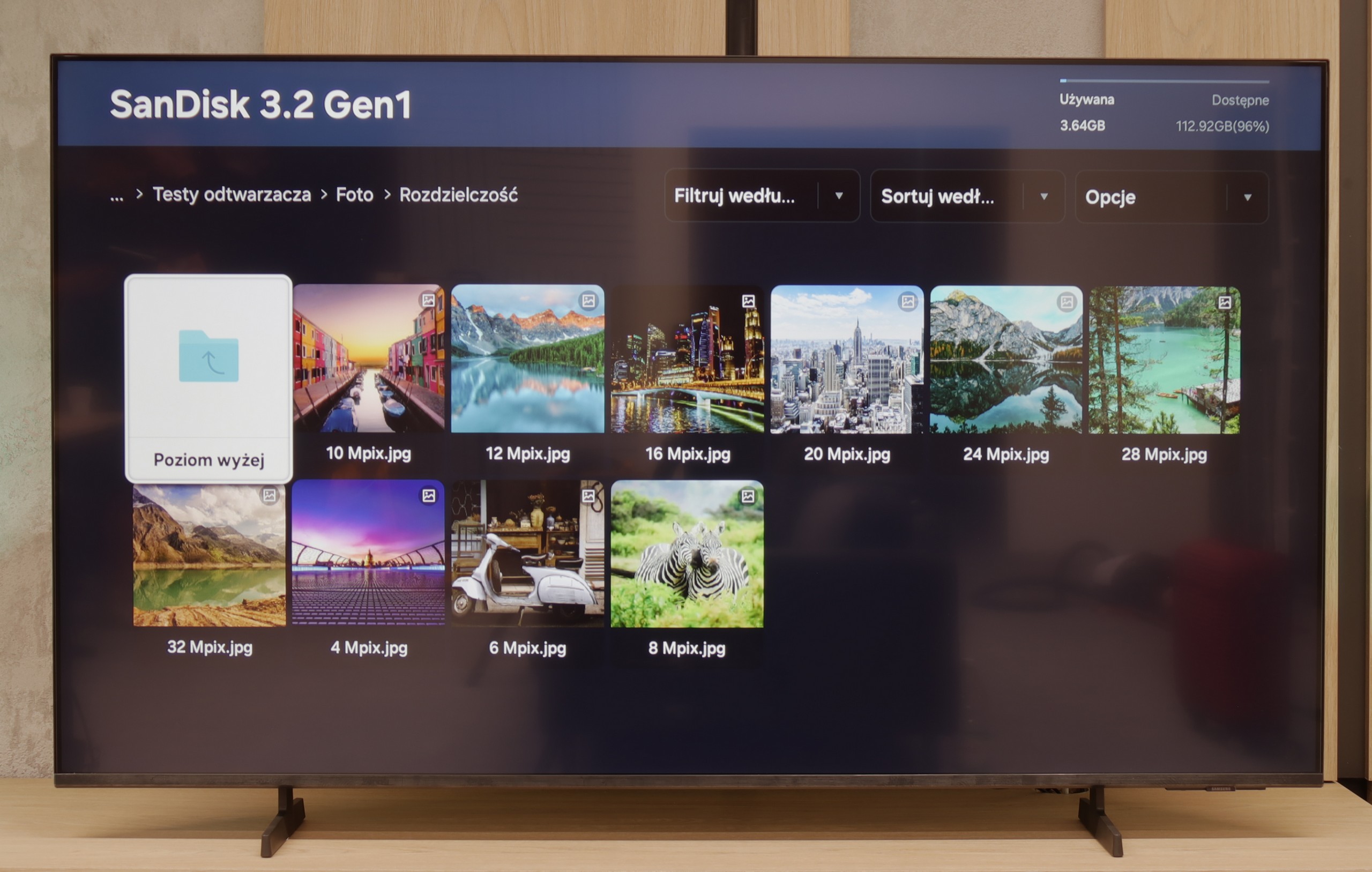
LG UT8100 handles playback of most popular video and audio formats, making it a versatile multimedia device. Although it lacks support for Apple's HEIC format for photos, it still provides satisfactory functionality. Special praise is due for the support of Polish characters in subtitles and the ability to change the font color, which allows users to customize the displayed texts to their preferences. In this category, the television performs really well.
Samsung U8092F handles playback of files rather smoothly – the television supports most popular audio and video formats. Of course, it does not support Dolby Vision, but we simply will not find that in any Samsung model.
There may be some reservations regarding the support for external text files – those that the user would like to add as subtitles to a movie. During our tests, the television only played TXT files, and other formats, such as SRT or SUB, unfortunately did not work. This may not be a problem for everyone, but it's worth knowing. Perhaps this is an issue to be improved in the future with an update to the television's operating system.
Apps
8/10
8.3/10














































Sound
6/10
5.7/10
- Subjective sound quality:6/105.7/10
- Dolby Digital Plus 7.1:
- Dolby True HD 7.1:
- Dolby Atmos in Dolby Digital Plus (JOC):
- Dolby Atmos in Dolby True HD:
- DTS:X in DTS-HD MA:
- DTS-HD Master Audio:
The sound in LG UT8100 is basic and does not stand out in any particular way. It suffices for everyday television watching, but with more demanding content, like movies or concerts, it may lack depth and dynamics. If we care about better sound quality, it will be necessary to connect an external audio system, such as a soundbar or home theater. The built-in speakers serve their purpose, but they will not impress more demanding users.
U8092F doesn't pretend to have a home theater onboard. We get a standard set of 2 x 10 W, which sounds decent, but without much excitement, though with a slight bass. For everyday viewing, this audio setup is completely sufficient. We were pleasantly surprised that it was able to play a movie with the built-in Dolby Atmos codec (JOC) – although, of course, we're not talking about true surround sound here.


